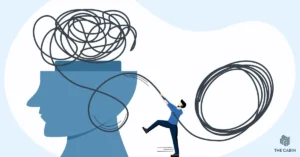The harms that Australia’s current “Ice epidemic” are causing to society are no more dire than Heroin in its heyday, and less lethal than the consequences of alcohol abuse. But scaremongering tactics and inappropriate distribution of funds may only serve to exacerbate the situation.
There has been a great deal of media and political attention on the subject of ‘ice’ or methamphetamine over the past year, mainly pointing at how much of a problem it has become and how it is tearing apart the very fabric of society. The reality is, there are bigger demons that we need to face than ‘ice’ – and a lot of it is related to drug policy and the easy ability to demonise drug users and those who are substance dependent.
There has been an unfortunate approach to the problem, especially by the Australian Federal Government, which has been aimed at primarily looking at the extreme negative effects of ice on the “Ice destroys lives” campaign. The reality, though, is while the individuals who become violent on ice are definitely destructive and cause problems for the people and support structures around them – they are the exception and not the rule. It is the same with alcohol – everyone who drinks responds differently to the effects of alcohol, some become angry, others docile.
In the case of alcohol, we also need to understand that this is the drug which causes the most deaths in Australia, year in and year out. Over the course of a year around 2,500 Australians will take their own lives, 1,100 will die from the direct causes of alcohol consumption – while the number that die from methamphetamine use would be lucky to reach the double digits. Ice is not a crisis, Australians drinking themselves to death is a crisis. But the clichéd skin- picking, derelict ice user is a far easier target than a cousin, or uncle or friend, drinking themselves to socially acceptable liver failure.
Alcohol is still the number 1 addiction that Australians are treated for at both The Cabin Chiang Mai and The Cabin Sydney – in fact it is the number 1 addiction Australians receive treatment for.
The effects of ice can be quite shocking for some people, but we cannot allow these few to inform public policy and guide funding into drug control and not into avenues for treatment. Just a year ago, we were talking about the effects of manufactured cannabis, before that it was party drugs, and heroin and even before that was ‘Reefer Madness’. Australia does not need another moral panic in relation to drugs, it is time that we grow up and recognise that the need for treatment is far more important than the need for control. As a country that is mature in its approach to drugs, their effects, and the treatment of such is far safer than a country that locks them away in a cupboard and says “If you touch the tainted fruit, I will punish you”
The big problem that we face with ice, however, is that public campaigns which shame and only show the negative, means that the average user does not seek help when they need it due to the stigma attached to the drug. If common public perception was that ice leads to violence and theft, and you were an ice user, would you speak to your family about it? Or would you keep it a secret from them?
The reality is, that fear based tactics do not have a good research basis, and from a psychological perspective, there are several reasons why. With an increase in fear tactics, there is often a decrease in education, with balanced education resources being the number one motivator of non-engagement in relation to damaging behaviours (whether it be teen pregnancy, crime or drug use). The most important reason is that, as humans, we have an ability to distance ourselves from the thought of negative consequences, the idea that ‘it won’t happen to me’ is a particularly strong one when it comes to the use of drugs and alcohol.
I strongly agree with the Australian clinician Alex Wodak – in that we need to realign ourselves with the fact that drug use is common, but that drug abuse is a health issue rather than a criminal or moral issue. In doing this we open ourselves to being better able to approach drug abuse from a rational and adult perspective – rather than locking up the recreational user, pathways will be directed at getting problem users into treatment and providing balanced education for young people.





